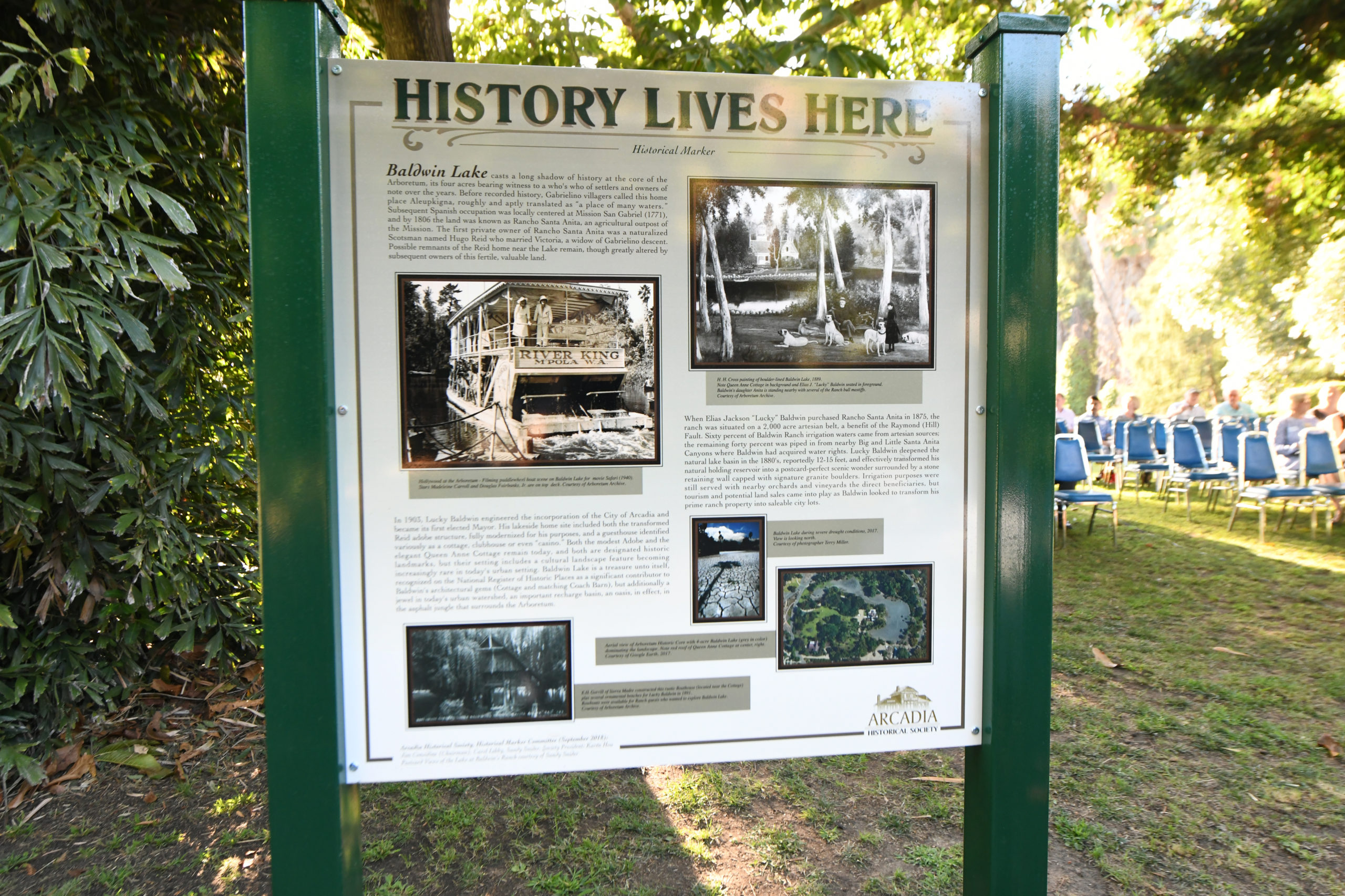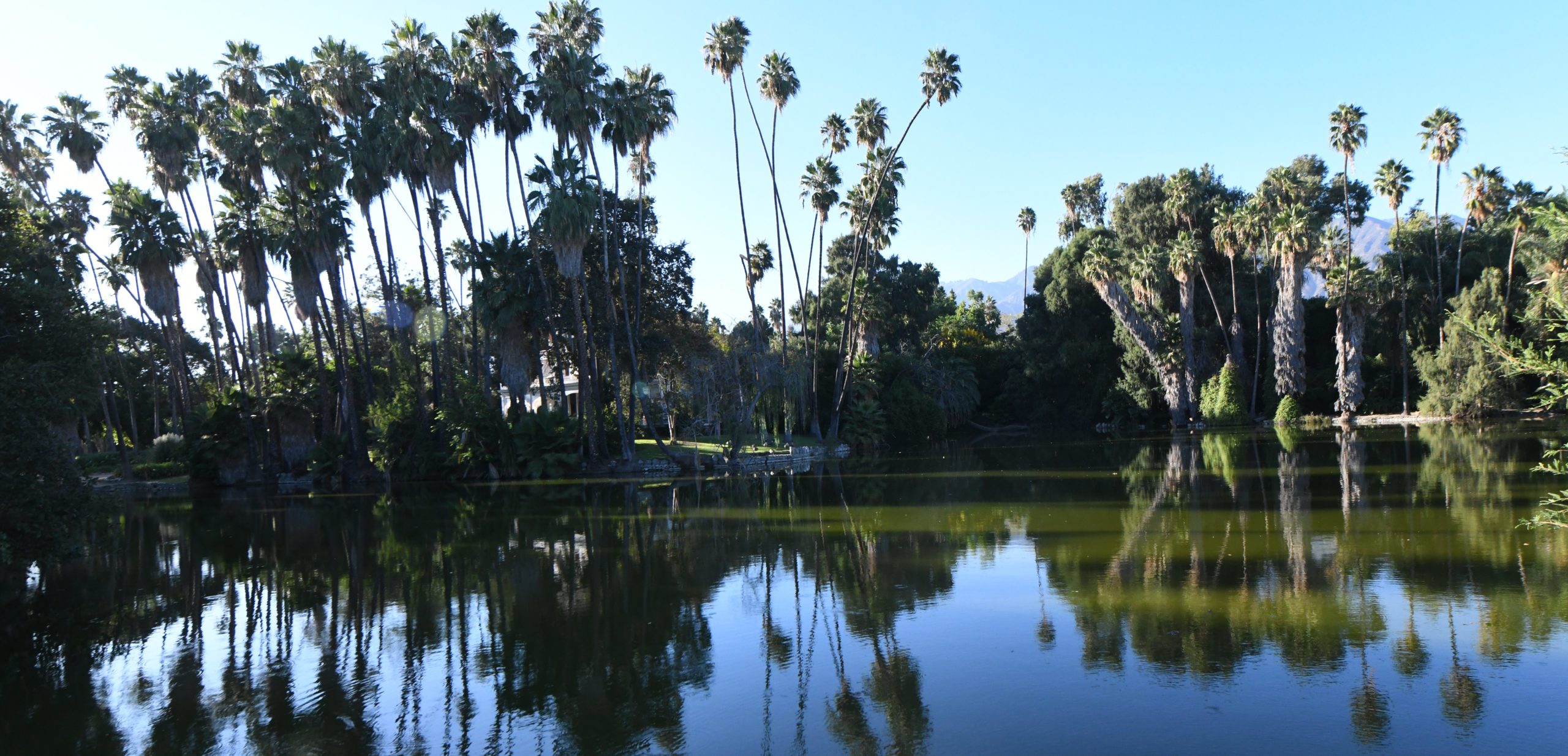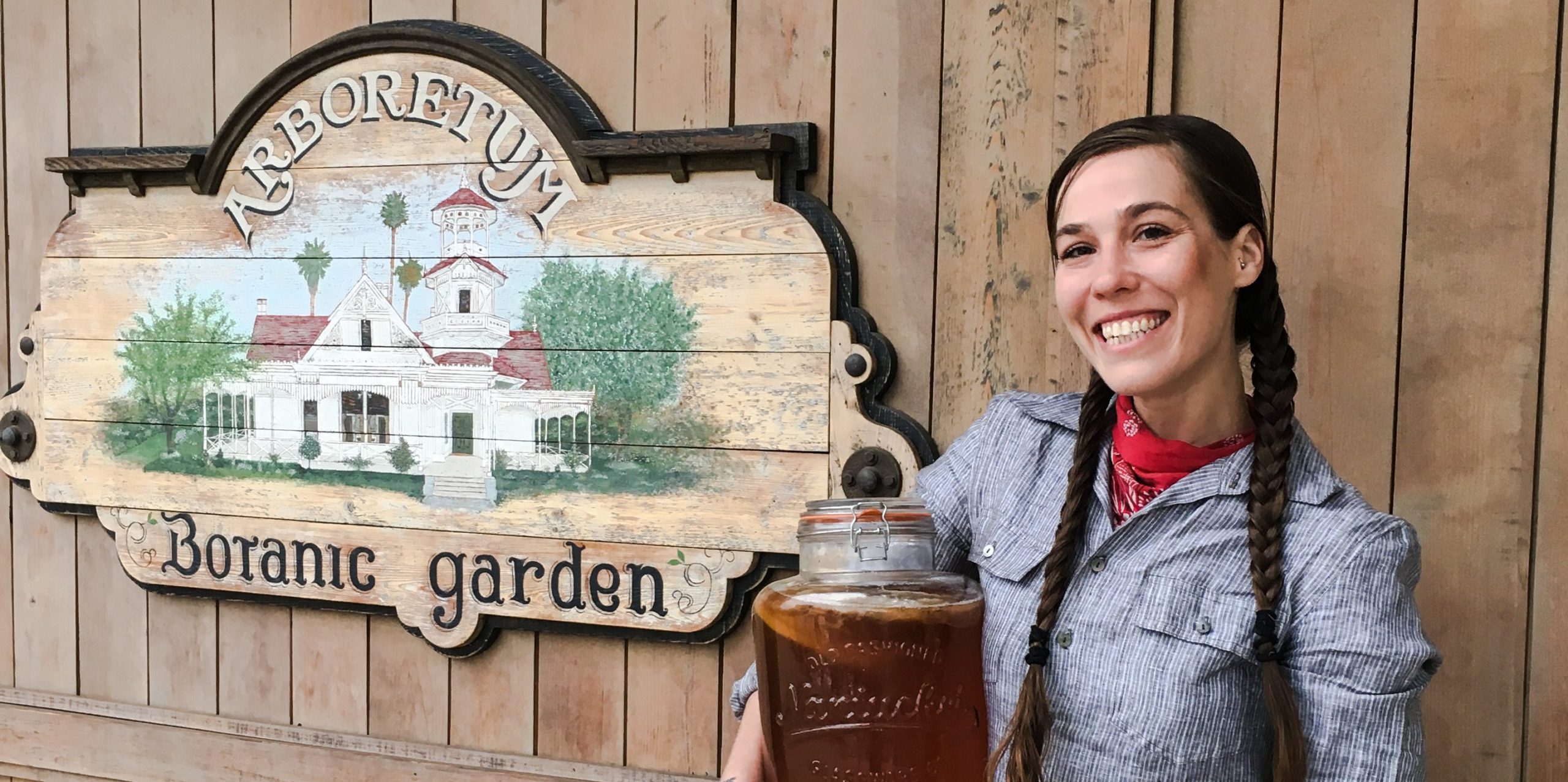
A “History Lives Here” marker was dedicated at Baldwin Lake last Thursday. The National Register of Historic Places lists the 1885 Queen Anne Cottage, matching coach barn, and nine surrounding acres worthy of recognition and protection. Four of the nine acres comprise Baldwin Lake. A special invitation-only reception was held to unveil the beautiful marker donated by the Arcadia Historical Society. The lakeside event was cosponsored by the L.A. Arboretum Foundation.
Included on the marker, is one of our photographer’s historic images of a dry Baldwin Lake, which Sandy Snider said she felt was a perfect addition to the marker.
Scores of guests enjoyed wine and cheese as speakers discussed the historical significance and future plans for the Lake.
Three thousand years ago, the homesite of the earliest inhabitants of today’s Los Angeles County Arboretum & Botanic Garden was known as Aleupkigna, “the place of many waters.” With the arrival of the Spanish in California some two hundred years ago, the residents of Aleupkigna became known as the Gabrielino (in reference to the mission responsible for their conversion), and the land upon which they had lived before removal to the Mission became Rancho Santa Anita, an agricultural outpost of Mission San Gabriel. Hugo Reid, a Scotsman with Mexican citizenship and married to a Gabrielino woman, became the first private owner of Rancho Santa Anita and in 1840 constructed his adobe house next to the lake.
When Elias Jackson “Lucky” Baldwin purchased Rancho Santa Anita in 1875, he acquired not only the natural lakes and cienegas on the property, but water rights in both Big and Little Santa Anita Canyons just north of his homesite. The Baldwin Ranch was situated on a 2,000 acre artesian belt, a benefit of its location atop the Raymond Hill Fault. Sixty percent of Baldwin Ranch irrigation waters came from artesian sources, the remaining 40 percent from canyon waters. Baldwin Lake, which served as a holding reservoir for ranch irrigation projects, was dredged and deepened, perhaps 12-15 feet, by owner Baldwin in the late 1880s, and a retaining wall, capped by granite boulders, was constructed around the lake edge.







